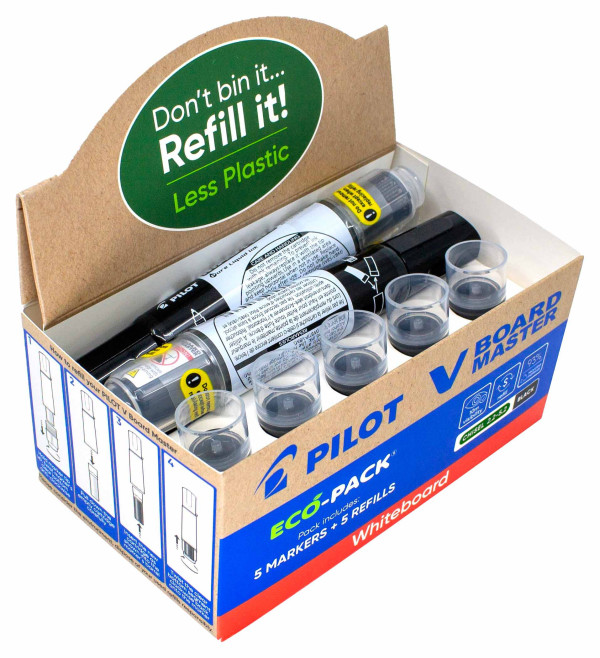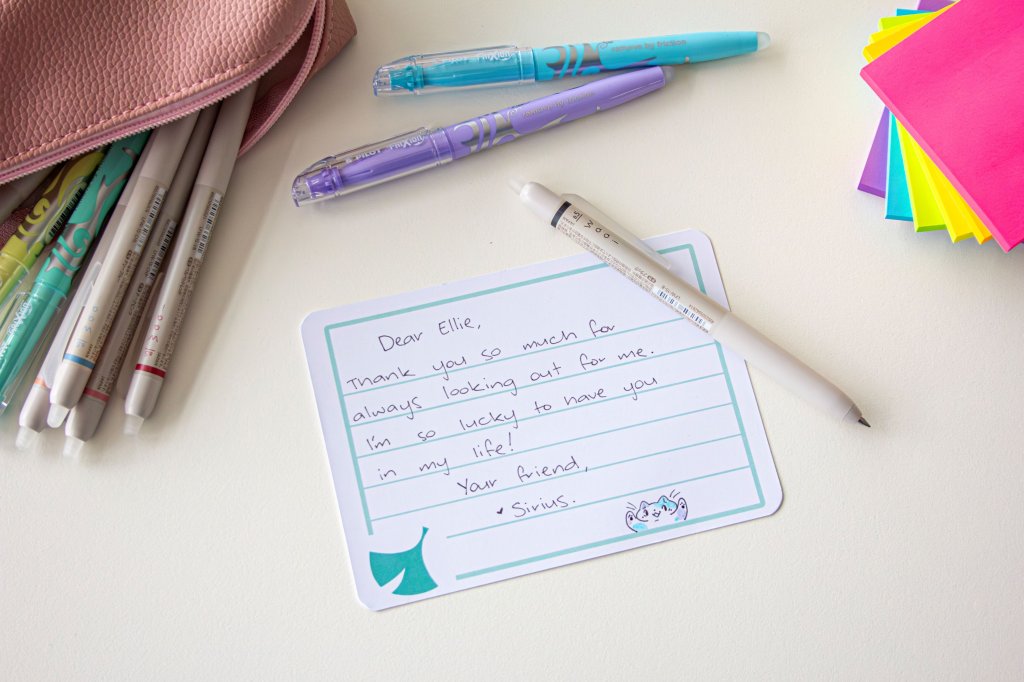In 1963, PILOT did exactly that with the launch of the Capless fountain pen (known globally as the Vanishing Point), the first truly retractable fountain pen in history. A writing instrument that broke 150 years of convention, the Capless introduced a mechanism previously thought impossible: a fountain pen with no cap, a retractable nib, and an airtight internal shutter that prevented ink from drying out.
Six decades later, it remains one of the best retractable fountain pens in the world, admired by pen enthusiasts, collectors, and writers drawn to its seamless blend of engineering, elegance, and heritage.

This article explores how the Capless was engineered during Japan’s era of rapid transformation, the extraordinary obstacles its designers overcame, and why it remains a timeless luxury gift for discerning writers today.
Key Takeaways
The Capless was developed between 1960–1963 during Japan’s period of rapid innovation and modernisation.
It was the first fountain pen to eliminate the cap entirely through a patented retractable nib and airtight shutter design.
Engineers built custom tools, including a handmade hydrogen furnace, to create components that previously did not exist.
It became an international sensation, winning global awards and earning its place as a leader in luxury writing instruments.
Today, it remains a prestigious gift and an enduring symbol of PILOT’s craftsmanship, technology, and Japanese design excellence.
A Pen Born in the Middle of Japan’s Innovation Boom
The story of the Capless begins in 1960, during a remarkable moment in Japan’s history. Tokyo Tower had just been completed. The Tokaidō Shinkansen was underway. The country was preparing for the 1964 Tokyo Olympics. Homes were rapidly adopting new conveniences such as televisions, instant ramen, and modern appliances.
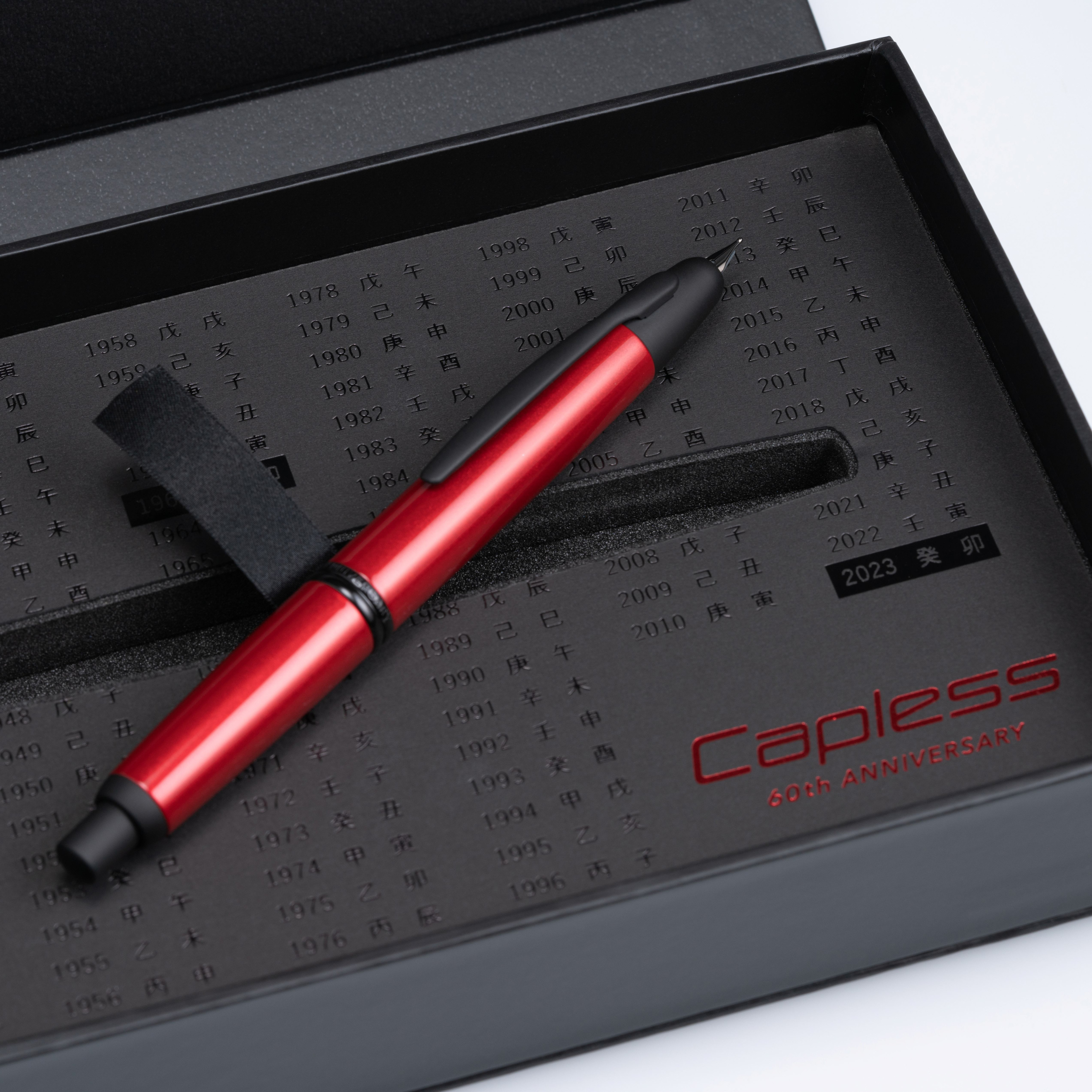
Innovation was everywhere, accompanied by a desire for efficiency, speed, and ease in everyday life.
At the same time, the writing industry was undergoing its own transformation. PILOT’s groundbreaking PILOT Super fountain pen (1955) had re-established the company as a leader in premium writing instruments. For readers curious about how fountain pens evolved before this moment, our guide on who invented the fountain pen provides helpful context on the innovations that shaped the modern pen world.
PILOT recognised an opportunity to create a fountain pen beyond anything the world had ever seen. And that meant challenging a rule that had held firm for 150 years: Fountain pens must have a cap.
The Radical Idea: A Capless Fountain Pen
PILOT’s engineers asked a question that seemed almost reckless at the time. What if fountain pens didn’t have a cap at all? It was a direct challenge to a design element considered non-negotiable. A fountain pen’s cap does three essential things. It prevents the nib from drying, protects clothing from ink, and keeps the nib safe from damage
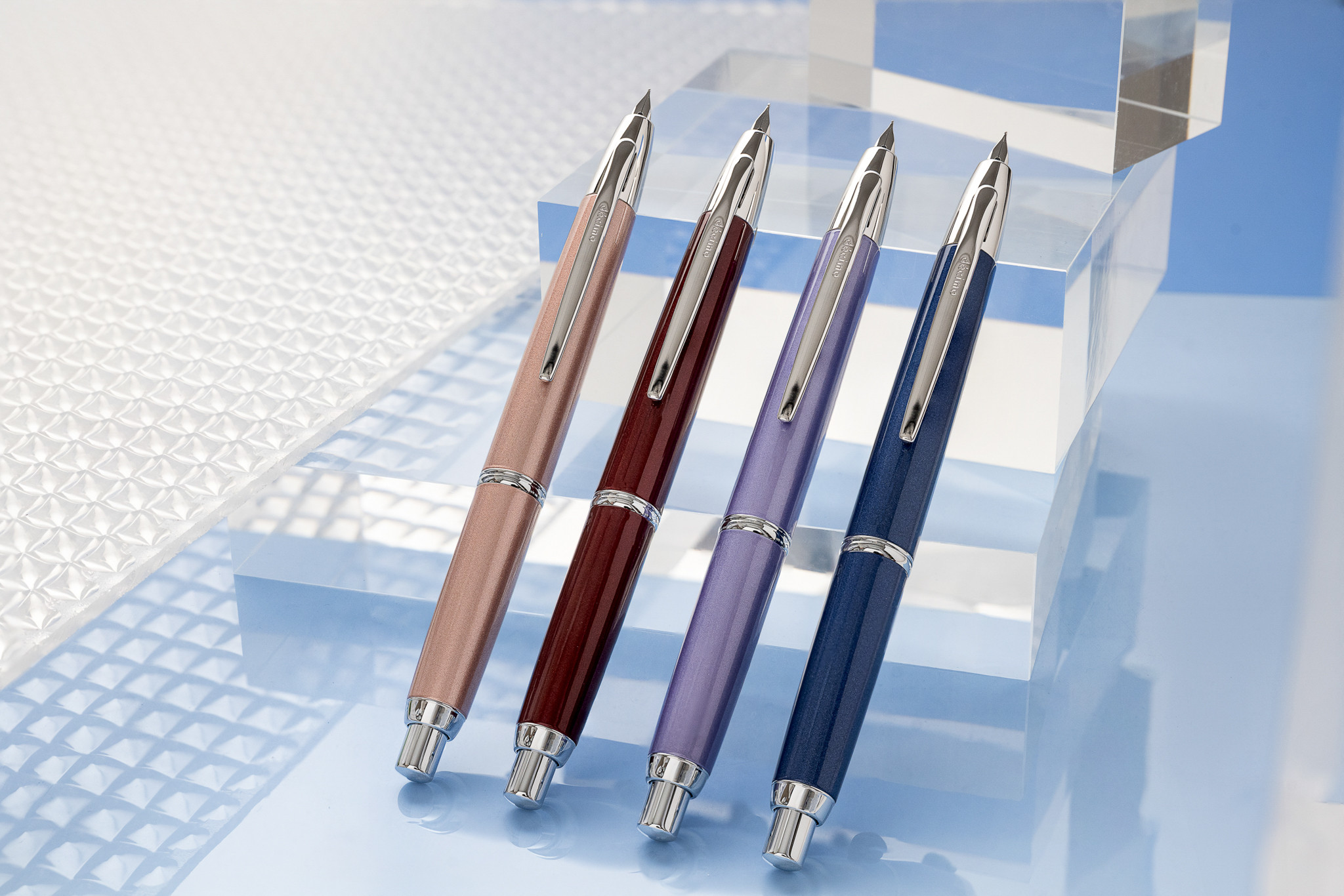
It was up to PILOT’s engineering teams to find another way to provide all of these benefits without the cap.To understand why removing the cap was such a challenge, it helps to know how traditional fountain pens work, especially how the nib, feed, and ink flow depend on airtight protection. They wanted a nib that could retract into the body and that replaced the cap internally. One idea was an airtight shutter that opened only in the split second that the nib emerged.
The concept was great, except for being entirely impossible at the time.
And so PILOT pushed ahead.
Three Years, Countless Experiments: The Engineering Struggle
Between 1960 and 1963, engineers brainstormed, sketched, prototyped, and debated endlessly. They explored a variety of ideas that offered potential, including:
Knock mechanisms
Twist mechanisms
Sliding mechanisms
Internal shutters
Ink delivery systems
Airtight seals
Precision-guided retraction parts
However, every solved problem seemed to introduce a new obstacle, the biggest of which was to fit everything into the slender, elegant form of a fountain pen barrel without compromising the writing experience.
Their first major prototype was completed in 1961, featuring a twisting barrel, an internal screw system, and a sliding-belt shutter mechanism. When the nib appeared during the internal demonstration, the room erupted in applause, but the triumph was short-lived.
The brass internal components couldn’t withstand ink corrosion or the repeated stresses of extending and retracting the nib. Plastic was too weak, and Aluminium wasn’t durable enough. But stainless steel? Now that was a potential solution.
Hard, resilient, corrosion-resistant. It was a pity, then, that it was nearly impossible to machine into the micro-scale components the mechanism required.
The Hydrogen Furnace: A Testament to PILOT’s Obsession
To craft the stainless-steel parts with the necessary precision, PILOT engineers needed new ways to process stainless steel. The technology to do so was in its infancy, including deep-drawing metal presses, more precise cutting tools, and a specialised heat-treatment environment, such as a hydrogen furnace.
This wasn’t something one could buy easily in those days, and so the engineering team did one better. They purchased individual parts and built their own.
They experimented, failed, rebuilt, and tried again. After months of trial and error, they succeeded.
This furnace enabled PILOT to:
Form stainless-steel pipes with micro-precision
Produce a long-lasting retraction mechanism
Maintain smooth motion inside a narrow barrel
Ensure airtight sealing around the nib
This was the turning point in the Capless’s development, and arguably one of the most important engineering achievements in PILOT’s history. Many of the ink-flow and durability issues common in early fountain pens were resolved through this level of precision, and our fountain pen troubleshooting guide explains how these mechanisms perform in everyday use.
From Prototype to Production: A Three-Year Journey
By 1962, the prototype was ready for factory testing. But transitioning from a hand-built prototype to a mass-produced pen proved just as challenging. Quality engineers had to ensure that the pens offered long-term durability and reliable ink flow, at the very least. Its launch helped redefine why fountain pens continue to hold cultural and creative significance, and our guide on why fountain pens still matter today explores the lasting appeal behind designs like the Capless.
Successful prototypes were made at a small scale, but for mass production, minute adjustments had to be made daily. Every component was re-engineered for consistency. Teams of developers and factory specialists collaborated relentlessly.
Finally, in the summer of 1963, production lines were ready. And in November 1963, the Capless fountain pen made its public debut.
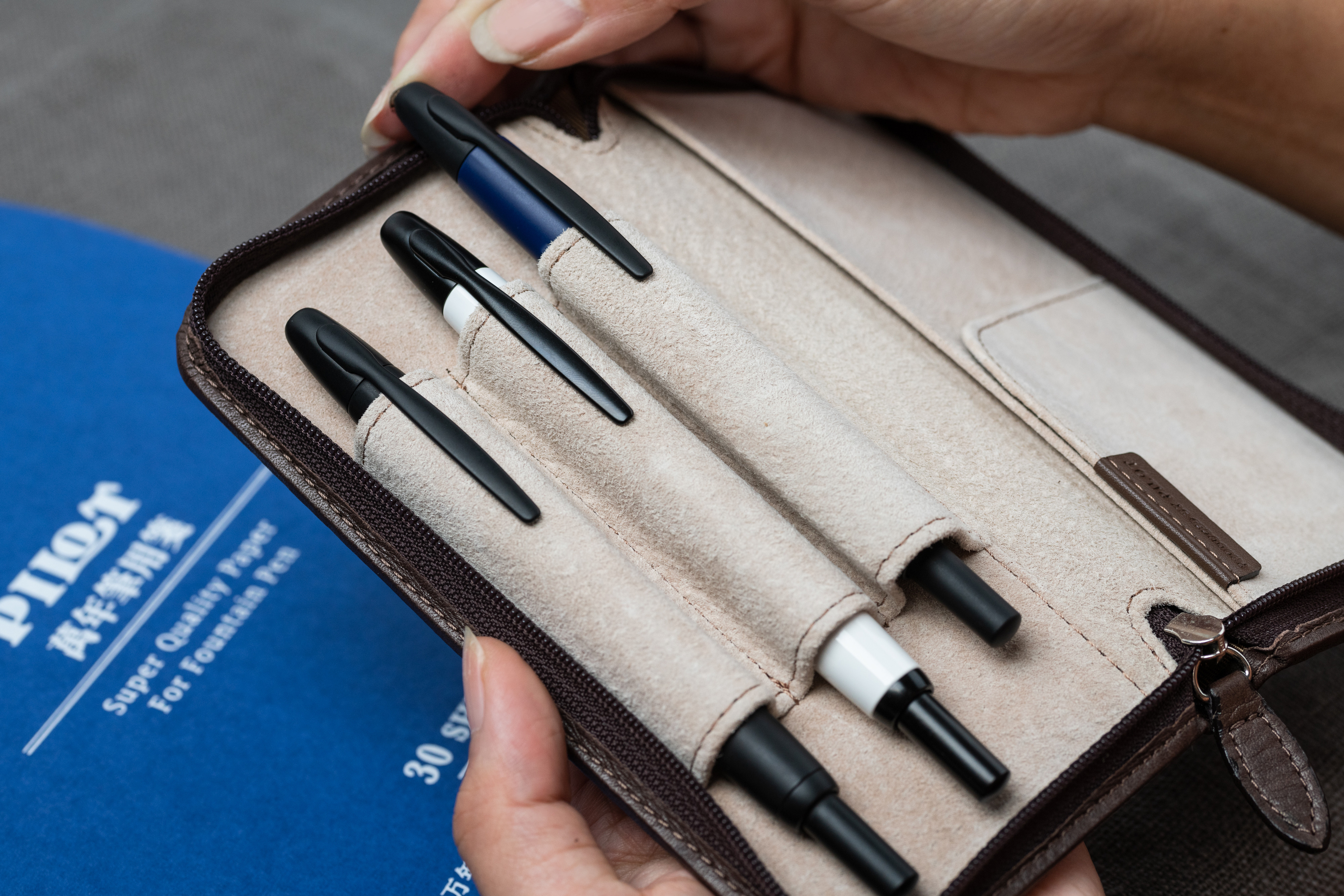
A Sensation at Launch: Awards, Headlines, and a Global Phenomenon
The Capless exploded onto the market with unprecedented excitement:
Featured in 50+ newspapers across Japan
Supported by a TV commercial showing the futuristic shutter at work
Displayed in stationery stores with innovative promotional tools
Protected by 90 patent and design filings worldwide
Consumers rushed to buy it, drawn by the futuristic mechanism and its promise of effortless, one-click writing. A year later, in 1964, PILOT released the knock-type (push-button) model.
It won Japan’s Good Design Award, then took home the top prize at the International Gift Fair in Paris, beating thousands of global entries. In 1965, the Capless earned the Okochi Memorial Technology Prize, one of Japan’s highest honours for manufacturing innovation.
The Capless wasn’t just a successful product. It had become a symbol of Japanese craftsmanship and technological ambition.
The Capless Today: A Cult Classic That Continues to Evolve
Six decades later, the Capless remains one of the world’s best retractable fountain pens. It remains both technologically advanced and historically significant. Modern Capless still retain the same quality, innovation, and class that one would expect from a premium PILOT product, and they’re also available in a variety of styles and designs.

Its airtight shutter mechanism still protects the 18k gold nib. Its balance and weight distribution still feel precise, modern, and intentional. And its design continues to evolve with new materials, textures, colours, and engineering refinements.
For many collectors, owning a Capless means owning a piece of writing history.
Why the Capless Makes an Exceptional Luxury Gift
The Capless sits at the intersection of engineering, heritage, and artistry, which makes it a standout choice for premium gifting, especially during the holiday season.
 It’s an ideal gift for pen collectors and enthusiasts, and the modern Capless also offers:
It’s an ideal gift for pen collectors and enthusiasts, and the modern Capless also offers:
The convenience of a retractable pen
The smooth, expressive feel of a gold-nib fountain pen
The prestige of a global icon
A connection to 60 years of Japanese innovation
For Christmas gifting, it aligns perfectly with PILOT’s Prestige Range, a curated selection of writing instruments created for lasting significance. It’s easy to refill a Capless, and easy to care for, offering a gift that becomes a long-term writing companion, not a disposable product.
For options, explore the PILOT Capless and the broader luxury range.
About Author
Aditya Pedlikar
Aditya Pedlikar works at Pilot Pen Australia, where his deep passion for erasable pens and their creative flexibility drives him to reimagine how people write, express, and bring ideas to life every day. Outside of work, he’s a family man who enjoys camping adventures, peaceful bush walks, and spending time surrounded by nature.
